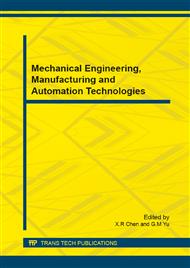p.42
p.46
p.50
p.56
p.60
p.64
p.71
p.76
p.80
Effect of Processing Parameters on Surface Roughness in Ultrasonic Deep Rolling 6061-T6 Aluminum Alloy with Longitudinal-Torsional Vibration
Abstract:
Orthogonal experiments of ultrasonic deep rolling with Longitudinal-torsional vibration (UDR-LTV) and conventional deep rolling (CDR) 6061-T6 aluminum alloy were carried out. The experimental results were analyzed by orthogonal-response surface methodology to study the effects of processing parameters on surface roughness. The results show that the values of surface roughness obtained by UDR-LTV are smaller than that of CDR with the same processing parameters. Meanwhile, feed-rate has a marked effect on surface roughness, and static pressure has a little effect on surface roughness. The quadratic regression method is used to construct the mathematic model of surface roughness based on the experimental results. The interactions between the processing parameters are analyzed using response surface method. The optimal parameters for the lowest surface roughness are given, which provide technical support for proper parameters in practical processing.
Info:
Periodical:
Pages:
60-63
Citation:
Online since:
December 2014
Authors:
Price:
Сopyright:
© 2015 Trans Tech Publications Ltd. All Rights Reserved
Share:
Citation:


